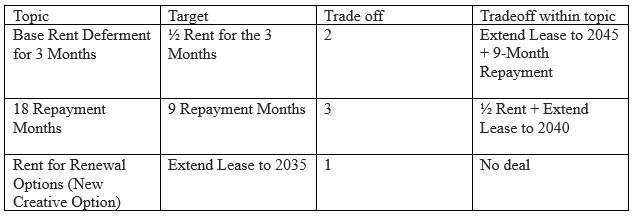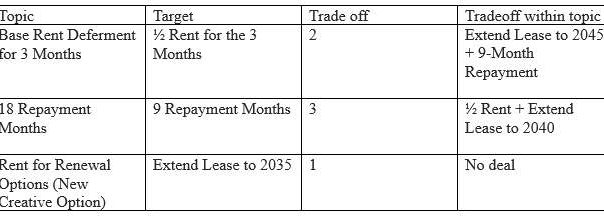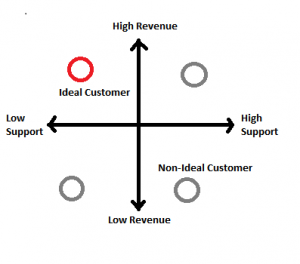
Negotiations are a strategic discussion that resolves an issue in a way that both parties find acceptable. In a negotiation, each party tries to persuade the other to agree with their point of view. In business, we are constantly negotiating with suppliers, vendors, customers, and employees. To avoid being surprised at the bargaining table, you will need to be prepared with a plan. The “I FORESAW IT” mnemonic is a powerful tool that sums up what a negotiator should follow to systematically prepare for an important negotiation. Each letter reminds you of questions you want to ask yourself and then answer as part of your negotiation preparation.
The mnemonic stand for:
I- Interests
F- Factual and Financial research
O- Options
R- Rapport, Reaction, and Responses
E- Empathy and Ethics
S- Setting and Scheduling
A- Alternatives to agreement
W- Who
I- Independent criteria
T-Topics, Targets, and Tradeoffs
Interests
- What are your interests?
- What are the other parties’ interests?
- What are your common interests?
The answers will help you discover possible solutions. The answers that you come up with also serves to establish a baseline to see if your offers will satisfy each party’s needs. When negotiating with a company, a skilled negotiator will not only consider the interests of the business, but also the interests of the negotiator. For example, how will coming or not coming to an agreement affect the other person, will it make them look good or bad in the eyes of their supervisor, etc.?
Factual and Financial research
- Have you looked at the company’s website, Facebook or LinkedIn pages?
- Have you looked at the company’s competitor’s website, Facebook or LinkedIn pages?
- Have you looked at the negotiator’s LinkedIn or Facebook profile?
- Have you used the Reference USA lifestyle database to discover the interests and hobbies of the negotiators?
During this step, you want to collect solid third-party facts that you can use in developing your offer and when dealing with push back so you can strengthen your case.
Options
- What are your possible alternatives to an agreement?
- What are the other party’s possible alternatives to an agreement?
You should develop five or more options. Don’t be afraid to list some wild options. While many of the ideas you come up with will never work, you are likely to uncover a brilliant one.
Rapport, Reaction, and Responses
Did you discover common interests with the negotiator when looking at their social media or lifestyle database that you can use to connect with the negotiator?
People love to talk, so give them a reason to open up to you about a common interest. Ask them questions.
Sharing a personal story or divulging something that makes you a bit vulnerable with the negotiator is a great way to display that you are being honest and candid.
“You want to be hard on the problem and soft on the person.”
Seth Freeman
Empathy and Ethics
Think about the negotiation from the perspective of the other party to uncover other factors that you need to consider.
- Do they feel stressed?
- If they agree with elements of your offer, how will it reflect on them?
- Have you considered if there are any ethics traps such as conflicts of interest, time pressures, obligations, conformity pressures, and others that the negotiator is trying to avoid?
You want to make sure that your offer does not force the other negotiator into an ethical dilemma that will only add undue stress to the negotiations.
Setting and Scheduling
- Who else can hear the negotiations and how might they react to what they hear?
- Is now the best time to negotiate or should you schedule for a different time?
- Is the time frame to reach an agreement a critical factor for you or the other party?
If one party has time constraints toward reaching an agreement, they lose negotiation power and may more readily agree to concessions to get the deal done sooner than later.
Settings and schedule are hidden influences that can shape a negotiation.
Alternatives to Agreement
- What is your BATNA (Best Alternative To a Negotiated Agreement)?
- What is the other party’s BATNA?
The BATNA of each party in a negotiation defines the relative power and leverage they will have going into negotiations. If one party’s BATNA is neutral and the other party’s BATNA is poor, the party with a neutral party is in a much better position- especially if it comes to a distributive negotiation.
Earlier, we looked at options and came up with five or more potentially wild ideas. Now is the time to use those options to try to define your BATNA.
Who
Are there individuals that are not party to the negotiations that may have some influence?
The list represents other people whom you can contact for insight or advice before or during negotiations.
Independent criteria
- What are industry standards?
- Are there objective benchmarks?
Citing credible and trusted sources that both parties agree with, such as the Kelly Blue Book value of a vehicle when negotiating to buy a new car or truck, can go a long way to coming to an agreement that is fair for both parties.
Topics, Targets, and Tradeoffs
This represents the summation sheet of the key points about the creative and competitive aspects that you can use during the negotiations.
The “Topics” list the matters you will discuss during the negotiations.
The “Targets” present the range that you are willing to accept.
The “Tradeoffs” list the rank order of the topics, from most to least important.
When it comes to negotiations, it is recommended that you look at all the topics as a whole, instead of each topic separately in a linear format to get agreement. The best negotiators are willing to make concessions on the cheap in exchange for the topics they hold most dear.
The following is an example of a “Topics, Targets and Tradeoffs” worksheet I used when a large corporate tenant asked for a 3-month rent deferral; to deal with some short-term cash flow issues, and proposed an 18-month repayment plan with no interest.

The original proposal relied simply on an emotional appeal to help them out and included no incentive for me to accept the initial proposal as offered.
Working through the I FORESAW IT model it was clear that tenant is very committed to the location having just done a major remodel. The highest priority creative option I wanted in exchange for agreeing to any deferment of base rent was an extension to the existing lease for at least 10 more years. Further, with six more years left in the current 20-year lease, a 10-year lease extension was in their interest as well as mine making agreeing to my conditions easy to swallow.
How can you use the “I FORESAW IT” mnemonic tool to help you in your next negotiation?
The “I FORESAW IT” mnemonic is a tool created by Professor Seth Freeman of New York University Stern School of Business.
Business & Finance Articles on Business 2 Community
(65)







